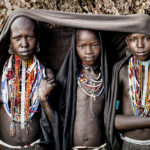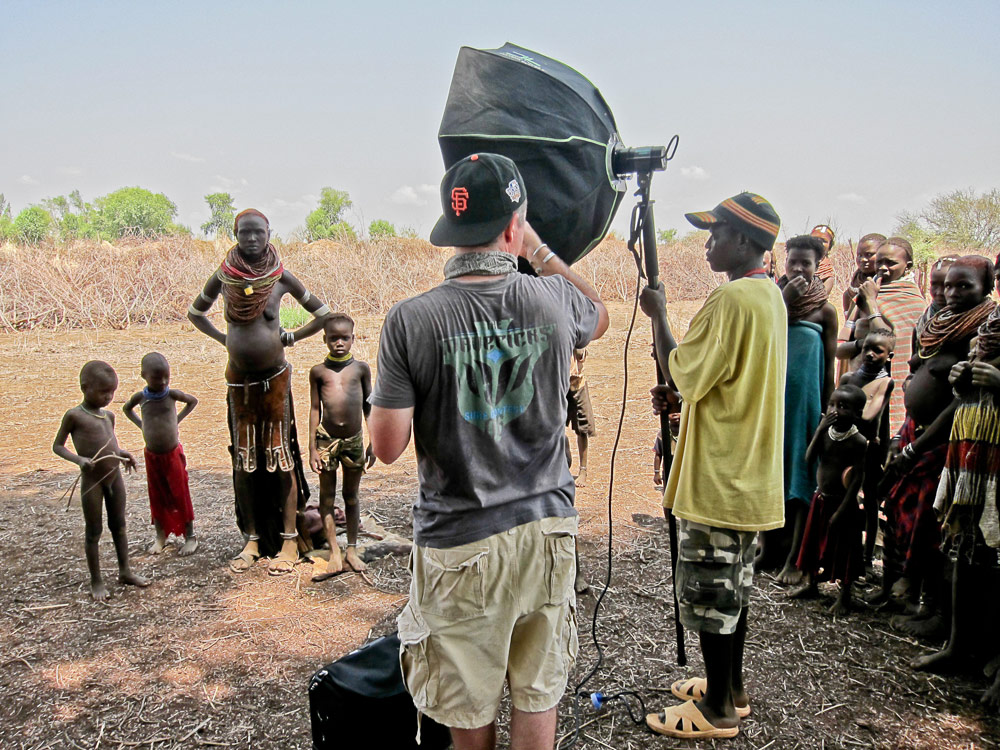The son of a fighter pilot born on a U.S. Air Force Base in France, William J. Palank became a successful general dentist and endodontist (root canal specialist) before deciding to give up the 9-to-5 dental grind to pursue his passion for photography. He is now a freelance photojournalist and fine art printer based in San Francisco, CA. His desire to explore the world and its hidden recesses led him to document traditional cultures like Ethiopia and Burma, with uncommon sensitivity and insight.
“I’d rather be on anti-malarial medications in the swamps of Burma slurping a bowl of mohinga and knocking elbows with some hill tribesman at 6 AM than jockeying for position along with 200 other photographers armed with tripods waiting for the sun to rise and reflect off a rock,” he trenchantly observes.
“My kit consists of a Leica M9 Rangefinder digital camera and a few Leica Summilux lenses. As I begin exploring this new adventure of writing about my passion for travel and Leica equipment, I’m hoping to instill some insight into what is happening behind the camera and in the digital darkroom. Along the way I hope to offer some useful travel tips on packing light, compact and tight.” Palank has also been a Leica M9 Akadamie presenter for the last two workshops in San Francisco. We had the chance to interview William about his remarkable story.
Q: You began shooting with an Epson digital rangefinder camera, moved to the Leica M8 and are now shooting with the M9. How do you think the M9 compares to the other two?
A: Remember, I had never previously shot with a film Leica and the Epson R-D1 was the first digital rangefinder camera out of the gate. Its main problem was that it only has 6.1 megapixels, so the ability to print larger was more difficult and owing to the 1.5 crop factor it was trickier working with wider lenses. I feel the move to the M8 was dramatic as it has 10.3 megapixels and only a 1.33 crop factor. The M8 was also able to shoot less noisy high ISO pictures and its build and feel in the hand was a totally different in a positive way. Still, I look at the images captured with the Epson and am amazed although I think this is mainly due to the Leica M series lenses I was using. I was lucky enough to be invited to the unveiling of the M9 in New York City by Christian Erhardt, Leica’s VP of Marketing. As you know it uses a full-frame, 18-megapixel sensor. I was completely amazed by the large images they had on display of the boxers in Cuba. The range of tonal gradations from highlights to shadows was something I had yet to achieve with any previous digital camera. I immediately knew I had to own one!
Q: You have quite an impressive collection of Summilux lenses for your M9. Which ones do you favor for your kind of work, which ones do you use most frequently and why?
A: Without a doubt the 50mm is the Summilux that constantly stays on my camera. I love the draw and the bokeh it produces when shooting my subjects wide open. It’s always sharp where it needs to be while maintaining a subtle and natural looking softness in the out-of-focus areas of the frame. It seems to read my mind!
Q: There is a strong graphic element and sense of color in your Ethiopian work. Do you think that reflects your style, the exotic locale, or both?
A: Thanks for noticing. Color completely evokes what I like to think of as my style. When picking an exotic locale to shoot I’m drawn to the color of the people, their clothing, their ornamentation, etc. Quite often when choosing my subject I will circle them while maintaining eye contact and at the same time trying to find a colorful or strong graphic element in the background. Then I typically shoot the subject at as wide an aperture as I can and let the Summilux lens do the heavy lifting by rendering that area out of focus, but still yielding a smooth bokeh.
Q: In most of your pictures, the subject or subjects are looking directly into the camera. Why do you think this is so and how does it reflect your aims or methodology?
A: When using prime lenses on a digital rangefinder camera, you can’t cheat by shooting from across the street and zooming in. The M-system necessitates that you get fairly close to the subject (when it’s not a landscape) and to interact. I get as close as my subjects will allow, but yet maintain the compositional elements I’m trying to achieve.
On a good number of the images I was using a Broncolor portable strobe light and soft box for fill or as my main light source. It’s pretty tough to hide in the background when my assistant is carrying a 3-foot Octobox and battery pack!
Q: There is something very dignified and self-assured about your Ethiopian subjects. Do you think this reflects their character or is it primarily due to they way you relate to them?
A: Exactly! I treat everyone from a small child to a village elder with the utmost dignity. Watching some photographers work, it’s as if they think they’re in Disneyland! In the forefront of my mind is that I’m in their house and need to abide by their system. I always ask myself “How would I like to be treated?” If possible, I try to have a conversation with the subject first and try to make them laugh. This allows them to feel more comfortable with me as I try to get closer and gives me a strong idea as to what their natural smile is like. If they don’t feel like smiling, that’s fine too. I’d rather their expression not appear to be forced. The Ethiopian culture is made up of proud and vigorous people. It was an honor to capture them within my frame.
Q: Do you have any projects in the works, and what other countries inspire you to document their people and reveal something about their lives?
A: I was lucky enough to have some work I completed in Northern India a few years back featured in LFI magazine. The cultures are so vast and different I’ve always wanted to go back. I have a specific project in mind documenting the “Untouchables” in Varanasi. I’m also trying to get the terms nailed down with a specific NGO to do some work in the Sudan. Unfortunately, due to the ever-changing political climate over the last several years they haven’t been agreeable to sponsoring anyone who isn’t a full-time employee.
Q: You stated that learning post-production was just as important to you as learning basic camera techniques. Did you do a lot of post-production work on your Ethiopian images and can you tell us something about it?
A: Most people don’t believe me when I say that my post-production is fairly minimal. It’s all about getting the exposure and lighting right before you even snap the shutter. Then when I bring the image in from Lightroom to Photoshop, I work on localized areas to increase contrast or de-saturate. I’ve been working with a plug-in called Viveza 2 by Nik Software to really speed up the process, thereby negating the need for complex layer masks that were a hallmark of my earlier work. The only thing I typically do to the images at a global level is to adjust the exposure, add clarity (mid-tone contrast) and add a vignette.
Q: What is it about the Leica M, or the M9 in particular, that you find to be conducive to your style or mode of expression, aside from the limited depth of field and lovely bokeh of Leica lenses?
A: Can I say all of the above? It really starts with the size of the M-System. I noticed that when I brought my Canon 5D Mark II with 70-200 zoom lens up to my eye, I scared a lot of local people that didn’t have a lot of experience being photographed or possibly hadn’t seen a modern digital camera before. The M-System allows me to blend in significantly better in exotic locations — as much as being the only white guy in a specific location will allow. The real stars are the lenses — sharp, light and fast and yielding beautiful images.
Q: How do you see your photography evolving going forward? Do you think you will be shooting the same type of pictures, perhaps in other locations, five years from now, or is there some other genre that fascinates you?
A: If I had to pigeonhole my work and describe what I truly like to photograph, it would be “environmental portraiture around the world.” I can’t imagine doing anything else. I find the smells, textures, colors and as an added bonus, the local food, simply irresistible. I was lucky enough to share many injeras and a cold St. George beer or two with the friendly residents on my recent trip to Ethiopia. It’s the people that I will always closely work with and whom I will never forget!
-Leica Internet Team
You can see more of William’s work on his website, http://www.williampalankphoto.com/ and follow him on Twitter, @PalankPhoto. To participate in a Leica Weekend in San Francisco with William Palank, please visit: http://www.cvent.com/d/3dqygj .


Comments (10)